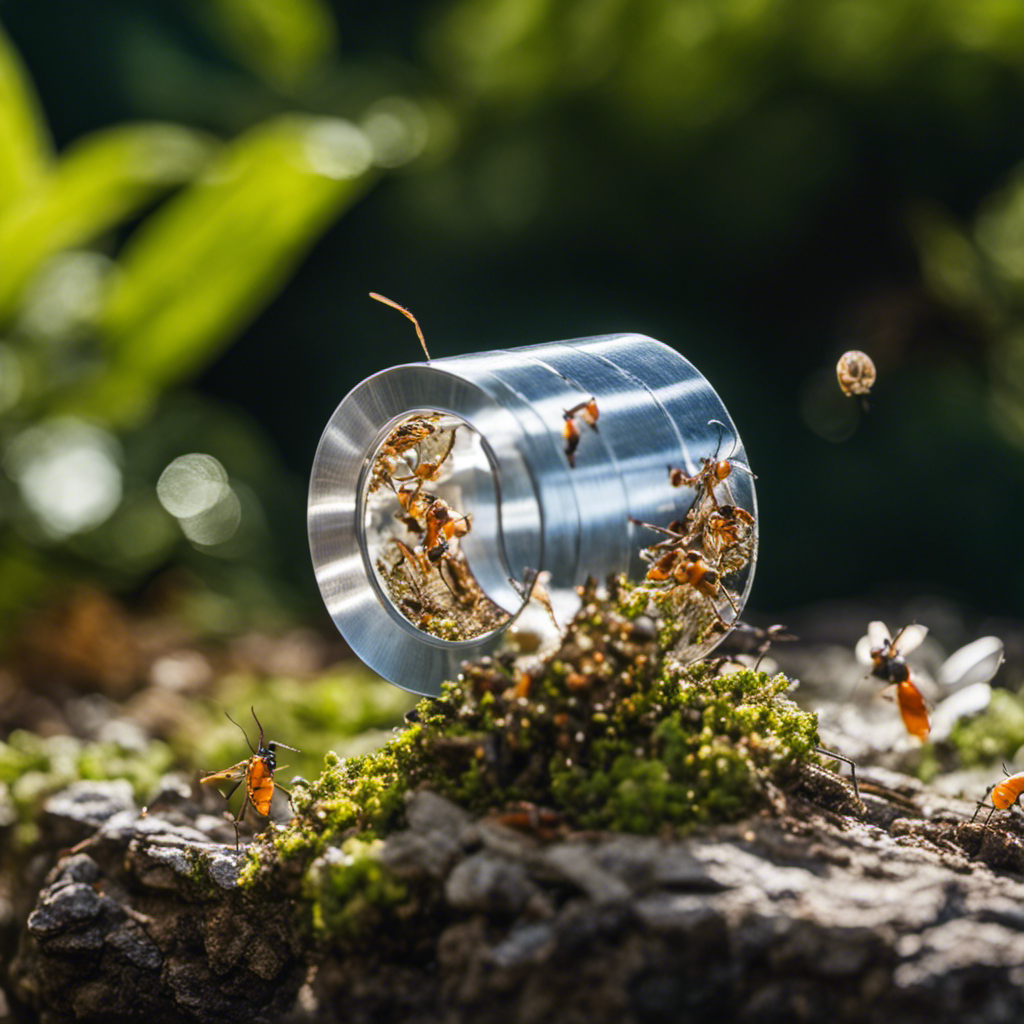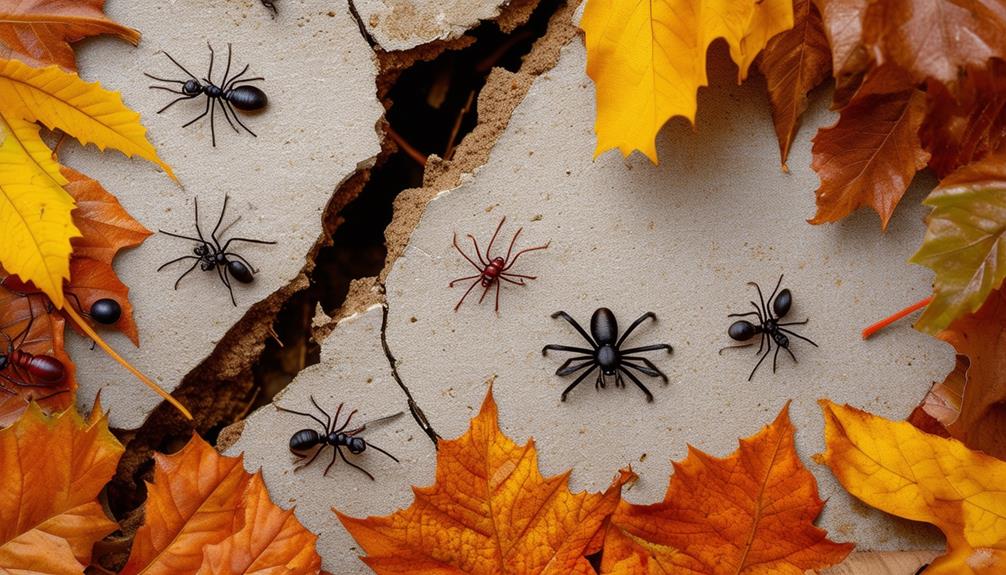In this article, we will delve into the intriguing question: Does aluminum foil repel insects?
We will explore the mechanisms behind insect attraction, the properties of aluminum foil, and whether it serves as an effective deterrent.
Drawing from scientific research, we will provide detailed explanations and practical tips.
The objective is to empower readers with knowledge to make informed decisions in their quest to serve others by creating safer, insect-free environments.
Key Takeaways
- Insects are attracted to certain odors and light polarization.
- Aluminum foil reflects light in various directions and has reflective properties.
- Foil is generally safe for contact with food but prolonged exposure may have health implications.
- Aluminum foil can play a role in pest control but has limitations, and other alternatives may provide more comprehensive protection.
Understanding Insect Attraction Mechanisms
A crucial element to understanding the potential repellent qualities of aluminum foil lies in comprehending the fundamental mechanisms that attract insects. Central to this are insect pheromones and light polarization.
Insects are drawn to certain odors, primarily pheromones, which are chemical signals emitted by their species for communication. Additionally, light polarization, which refers to the direction in which light vibrates, significantly influences insect attraction. Certain insects, such as bees and flies, are attracted to horizontally polarized light, which is typically reflected off bodies of water.
Aluminum foil, having a shiny surface, reflects light in a variety of directions, potentially disrupting this attraction. By understanding these mechanisms, more effective, service-oriented strategies can be developed for repelling insects.
Overview of Aluminum Foil Properties
The reflective properties of aluminum foil, a common household item, play a substantial role in its potential to deter insects. This is due to a specific characteristic gained during the Foil Manufacturing Process, in which aluminum is flattened into thin sheets, enhancing its reflective capacity.
This same process also makes the foil flexible, enabling it to be molded into various shapes and sizes. As for the Health Implications of Aluminum, it’s generally safe for contact with food and does not contain any harmful substances that could be transferred to humans. However, prolonged exposure to aluminum could potentially lead to health issues, particularly when used in cooking.
Ultimately, the properties of aluminum foil make it a unique material, with potential benefits in repelling insects.
Aluminum Foil as an Insect Deterrent: Myth or Reality
While the unique properties of aluminum foil suggest potential benefits in repelling insects, it necessitates a deeper examination to distinguish between myth and reality in its use as an insect deterrent. Scientific studies offer varying conclusions on aluminum foil’s efficacy, largely due to the complexity of insect behavior.
Certain species may be deterred by the reflective surface or metallic scent, while others seem unaffected. Thus, it’s crucial to consider specific insect responses when evaluating foil’s effectiveness. Although aluminum foil may deter some pests, it’s not a universal solution.
Foil alternatives, such as essential oils or insect-repelling plants, may provide more comprehensive protection. Hence, while foil can play a role in pest control, its limitations warrant consideration.
Scientific Explanations Behind Foil’s Repelling Abilities
In analyzing the science behind aluminum foil’s potential to repel insects, several factors come into play.
The first is foil’s reflectivity. When light strikes the aluminum surface, it is reflected in multiple directions, creating a dazzling effect. This can confuse and disorient insects, discouraging them from approaching the area.
On a secondary level, aluminum foil may cause electromagnetic interference. Insects, particularly bees and ants, navigate using Earth’s magnetic field. The presence of aluminum, which is a good conductor of electricity, can disrupt this navigation, thus deterring the insects.
While these theories provide plausible explanations, more research is needed to fully understand the phenomenon. This could potentially lead to the development of more effective, environmentally friendly pest control methods.
Practical Tips for Using Aluminum Foil Against Insects
Given these potential repelling abilities of aluminum foil, let’s now explore some practical ways to use this material in warding off insects.
The effectiveness of foil in deterring insects varies depending on Household Pest Types and Foil Placement Strategies.
For smaller pests like flies or mosquitoes, strips of foil can be hung near windows or doors to disrupt their navigation.
For larger pests like rodents, foil can be placed strategically around entry points.
It’s crucial to remember that the foil’s reflective properties are key in disorienting pests, so it should be placed in well-lit areas.
It’s also worth noting that aluminum foil should be used in conjunction with other pest control measures for optimal effect.





